· 7 min read
3 Strategies to Grow Gamers’ Loyalty and Retention Rate
Olga Padulosi
CMO at AppFollow
We gamers are a fickle bunch. For a lot of mainstream gamers, “Shiny New Toy” syndrome is all too prevalent. However, some of the older and more dedicated players can easily sit down with the same title they’ve been playing for years and still have a blast.
Such is the gaming scene.
So amidst this, how do you foster loyalty among your gaming audience? And how can you make sure they keep coming back? There are a few things that you can do, and luckily for you, we’ve listed 3 of them below…
1. Pay Attention to Your Audience
As a game developer, one of the worst things you can do is overlook valuable feedback from your players.
While playing through your game, your players will push the boundaries of all your design choices, and will almost always find something that breaks. Not that this is necessarily a bad thing, but you’ll want to make sure you have your pen and paper at the ready for when this happens.
Loyal fans of your game will always want to share feedback with you, and more importantly, be heard. But they’ll usually bypass your handy support email and share their thoughts in reviews or forums, which as you know, can affect the overall rating of your title.
Basically, it’s important to take note, and let them know that you’re listening. If you’re still not convinced, here’s a couple of reasons why should:
- You can raise the bar, and set a new standard for gaming developers.
- A few gaming giants are guilty of not listening, and this sadly reflects on the rest of us. Listening to your audience will bring them on your side, make them feel a part of your game, and encourage them to give you valuable feedback about your title in a positive way.
- It can improve your retention rate.
- You’ll always get a couple of negative reviews here and there (unfortunately, we can’t please everyone), but a barrage of them can influence other potential players and scare them away, especially if those reviews haven’t been addressed.
So how can you address feedback from your audience? The easy answer is, talk to them. Thank players for participating, take care of their concerns and encourage them to leave feedback. This is a crucial step of building an ever-long relationship with your players.
A great example of this are the developers behind Descenders, RageSquid. Using Discord, they introduced a dedicated bug channel, which actually encourages their players to give feedback, and kept their review section clean with positive comments.
2. Consider Feature Requests
As difficult a job as game design is, sometimes the process gets so head-heavy that we lose sight of alternatives. And while not every player understands the limitations of technology, they still offer great ideas for new features or adjustments to existing ones.
Where do they do this? As mentioned above, it’s almost always in the reviews. It’s simply easier for players to voice their ideas here than to grab the developer’s contact details and open an email.
Feature request reviews can be all over the rating map, so there’s no rating range that’s going to catch all such comments. A quick way to tackle this it to quickly scroll through and keep an eye out for keywords like “I think…”, “They should…”, “Add”, “Change”, or “Fix”.
Indie developers need to be especially aware of this. Some gamers gravitate towards these types of companies precisely because of the access they feel they have. If we email a gaming giant, like Rockstar for example, about some ideas we had for one of their games, it’s unlikely we’d get a response (mainly due to the sheer volume of emails they get). However, players will expect a different experience when emailing someone like thatgamecompany or FACEPUNCH.
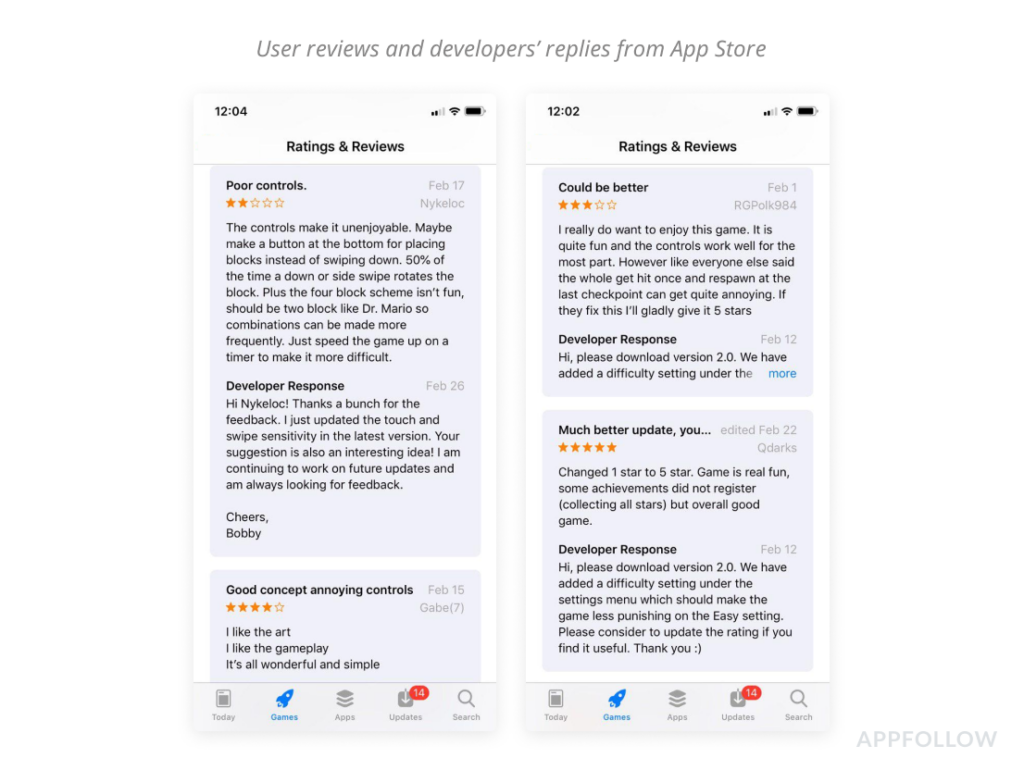
Be the experience that your users are hoping for. Give them access, be responsive, and be open. You won’t have the same sheer volume that our triple AAA competitors have, so be the ones that respond to their players, and make them feel special.
3. Start Your Communications
If you’ve never worked with app reviews, this job may seem daunting. Yet, to start the communication with your users, you don’t necessarily need to hire a customer support team, or spend the whole day answering the reviews. Here’s how you can start:
1. Take care of featured reviews
These bad boys can ruin the first impression of your game even if a user hasn’t installed it yet. These reviews are the face of your game, the first impression that new players see. So you want to make sure they’re good, or simply answered.
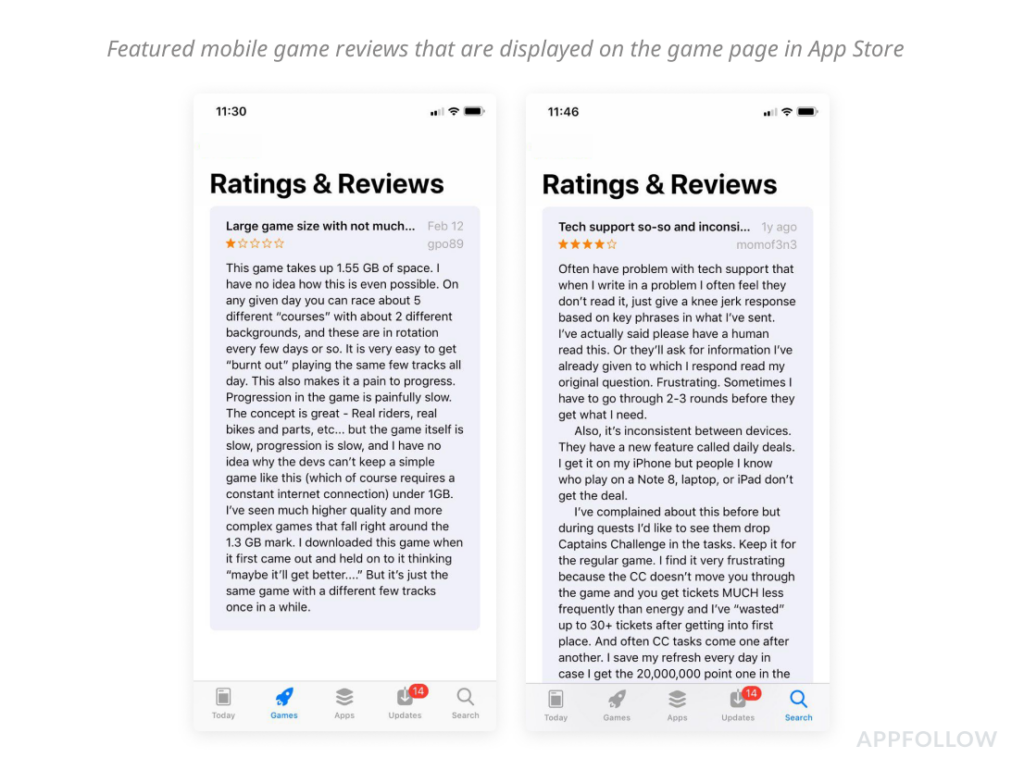
It’s important to stay on top of them and make sure that every featured review has a detailed response. As mentioned, this is the first point-of-contact for a lot of users, so these reviews impact your conversion the most. You build trust by doing this, and that trust brings loyalty in a continually shifting GameDev landscape.
2. Respond to negative reviews
Ideally, this number will not go beyond 15% of all reviews. These 1-star and 2-star reviews make your app rating lower, so your game could lose thousands of possible installs. Responding to negative reviews offers you a chance to convert a dissatisfied customer into a happy one.
Assuring them that you’ve either logged or fixed the problem helps build your brand identity. And if satisfied, they’re likely to change their rating, helping you increase that all important conversion rate.
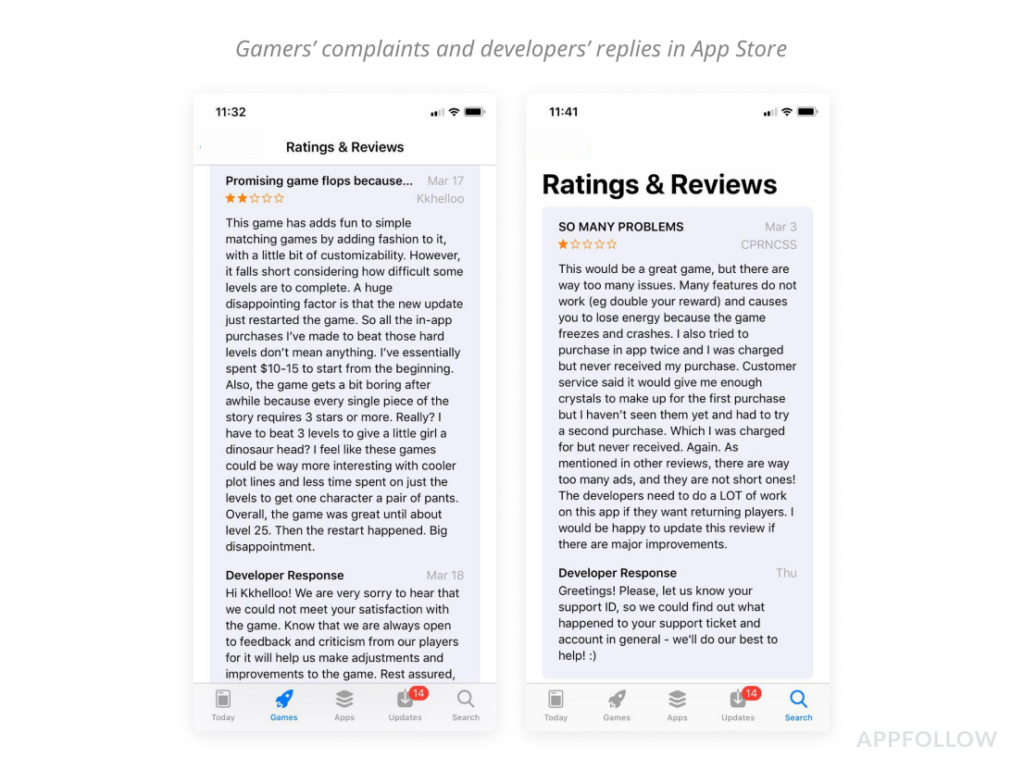
3. Answer questions
Sometimes users just get stuck or need information. Responding to these inquiries builds trust, loyalty, and of course, conversion.
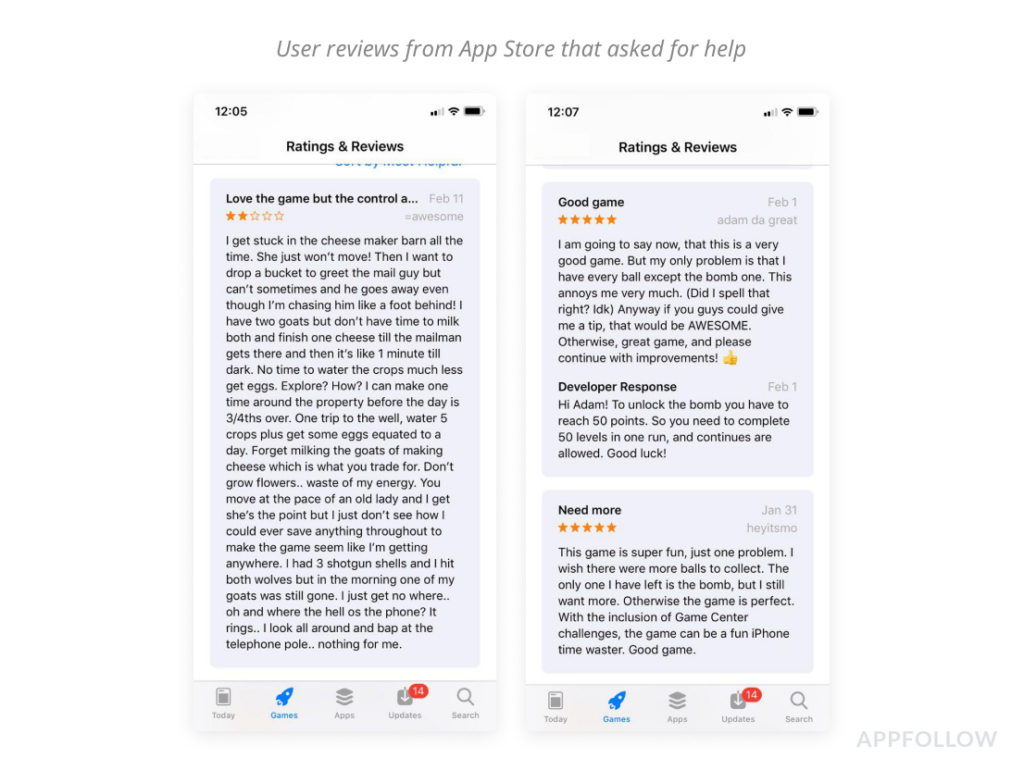
Be sure to answer especially common questions and try to help out any users that seem to be having trouble when using the app. This might also be a UX issue, so don’t be opposed to looking into that as well.
Rewards
Your replies are the best way to change a gamer’s opinion. We’ve noticed that they easily change their rating and become more devoted once you’ve found the time to answer them. However, this works the other way around as well:
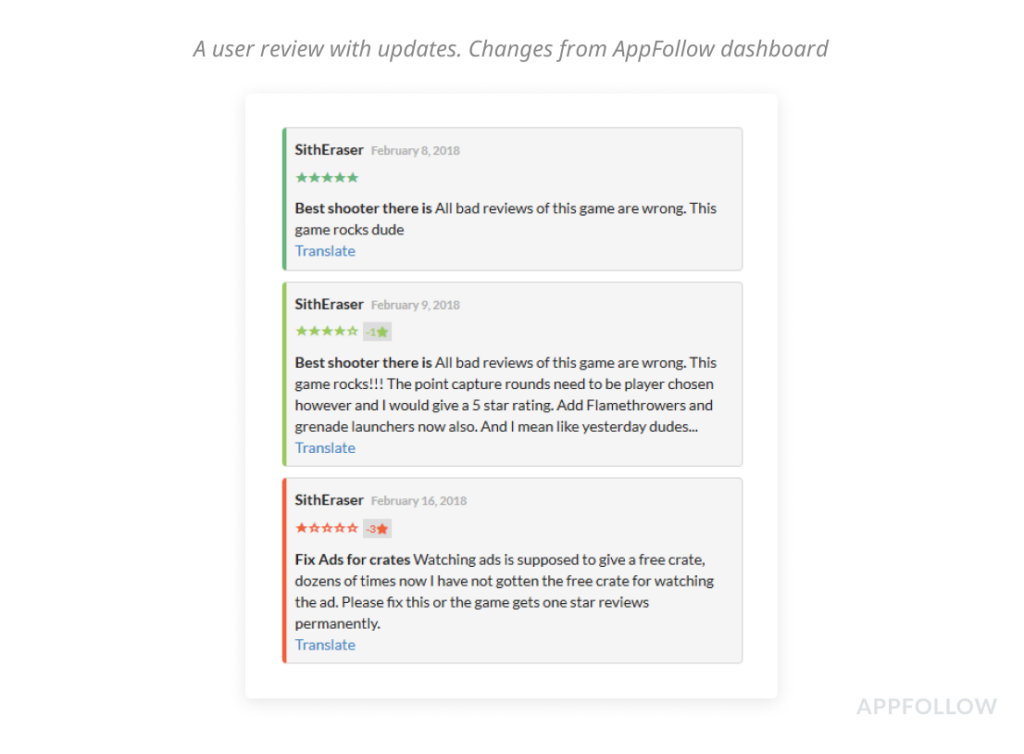
A user updated their review 18 times to draw the developer’s attention, but sadly didn’t get any reaction. If the developer had reacted quickly here, they may have avoided an unfortunate rating, and more importantly, an unhappy customer.
What you can take away from this…
By now, you should have seen a clear theme from this post: communication. Gamer loyalty is all about feeling included in the process of developing and launching your title. It’s easier to be emotionally invested in something once you feel apart of it, which is something very unique to the gaming industry.
You can’t change a plot to a film, a chapter in a book, but you can suggest tweaks and improvements to your favorite gaming titles. Listening and being responsive to feedback and ideas is the quickest way to get loyalty.
If you’ve enjoyed this post, make sure to learn more about AppFollow here. Equally, there’s a ton more resources out there that you can dig your teeth into, some of which are: